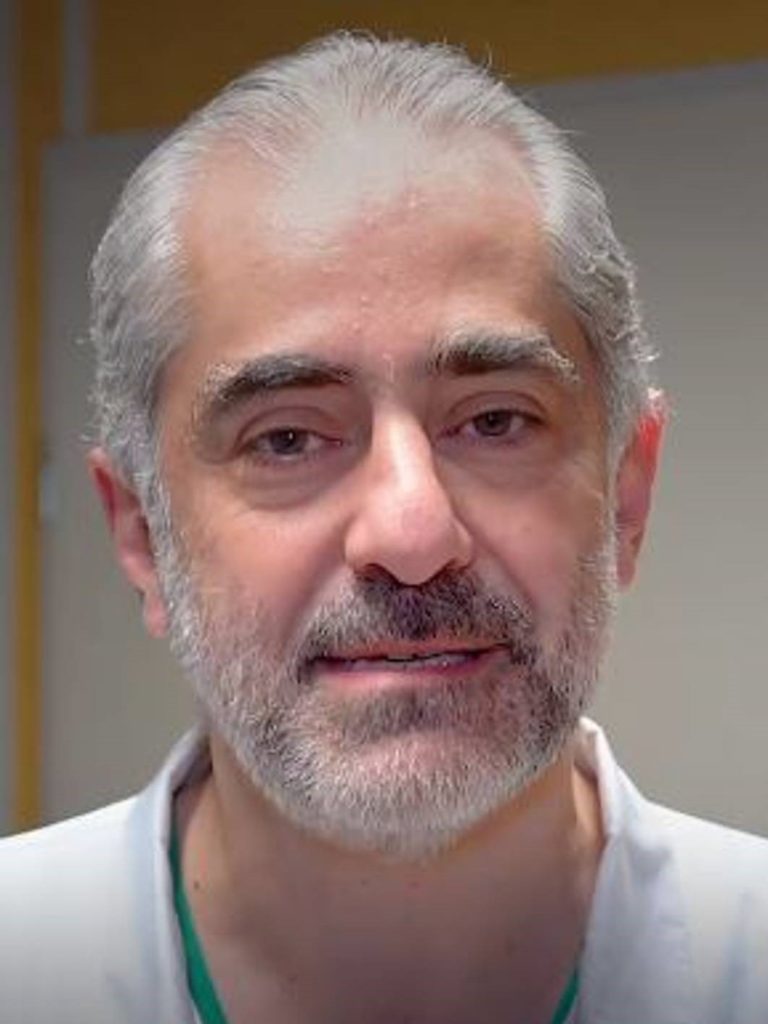Keynote Lecture

- Gregor Majdič (University of Ljubljana, SI)
- Sunday, 10 September
- 18h00 – 19h00
Love is our companion from the cradle to death. Mother love is the powerful emotion triggered at birth and ensures the care and thus the survival of the offspring. Motherly love is later replaced by love between partners, which can last a lifetime or be stopped and restarted again and again with new partners in the course of life. But what is love? Is it something incomprehensible? Is it a game of molecules/neurotransmitters in our brain? Is it an intoxication? Neuroscience is interested, among other things, in what happens in our brain when we are in love. Although we are still far from fully understanding what goes on in our brains when we are in love, we are slowly deciphering the changes in our brains when we fall in love and when we stay in a lasting relationship.
Monogamy is common in birds, where mothers and fathers care for offspring in more than 90% of all bird species. However, it is much less common in mammals, and only about 5% of mammals live in lasting monogamous relationship. We have learned a lot about what goes on in the brains of monogamous animals from voles, small furry animals, some species of which engage promiscuous mating patterns and some species mate for life. Studies of these animals have shown that two neurotransmitters, oxytocin and vasopressin, play a predominant role in the formation of lasting partnerships between male and female voles. During the first mating in monogamous prairie voles, oxytocin and vasopressin regulate dopamine activity in the reward system, which triggers a desire in partners to stay together for life. Several studies in humans have shown that oxytocin in particular, but also vasopressin to some extent, plays a role in human bonding and trust. In the human brain, serotonin levels also change when we are in love, although it is not yet clear exactly what role serotonin plays in love. Imaging studies have shown changes in activity in different parts of the brain, but again, we do not yet fully understand how all the changes in brain activity are related to feelings of love.
We are slowly learning what happens in our brains when we fall in love, but we are still far from fully understanding our brains. However, even if we learn all we can about the cellular and molecular processes in our brains during love, love will remain a mysterious feeling, probably something unique to our conscious species.
EUROTOX Lecture Award

- Bruno Mégarbane (FR)
- Monday, 11 September
- 08h30 – 09h30
EUROTOX - SOT Debate


- EUROTOX Debater: Robert Barouki (Université de Paris, FR)
- SOT Debater: Robert Wright (Icahn School of Medicine at Mount Sinai, NY, US)
- Monday, 11 September
- 13h00 – 14h00
Each year, the EUROTOX congress includes a debate in which leading toxicologists from EUROTOX and SOT advocate opposing sides of an issue that has significant toxicological importance. The debate continues a tradition that originated in the early 1990s.
This year, the debaters will address the proposition “Will the exposome drastically change the practice of toxicology?” The debaters will explain the concept of the exposome and discuss its opportunities and challenges for toxicity assessments. Specific questions to be addressed include: Is the exposome concept adequately mature to be applied in the assessment of human toxicities? Is our understanding of what factors contribute to the exposome sufficiently known? Is there a systematic way to measure or model the influence of environmental exposures? Are analytical and diagnostic techniques sufficiently advanced to reliably measure the exposome? Do we have the necessary mechanistic understanding to allow linking exposures with health outcomes? Are we ready to include “all life exposures” in our toxicology practice? Are we able to integrate the social exposome with our toxicology practice?
In addition to inclusion as a Featured Session at this meeting, this debate took place already (with the debaters having taken the reverse positions) during the 2023 SOT Annual Meeting in Nashville, USA, March 19-23, 2023.
SOT Merit Award Lecture

- Lois D. Lehman-McKeeman (Bristol Myers Squibb, NJ, US)
- Tuesday, 12 September
- 08h30 – 09h30
Mechanisms explain how things work. Toxicology research, with its focus on identifying hazards and defining potential risks, is highly informed by mechanistic studies. Mechanistic research requires integrating molecular, biochemical, and cellular effects along with considerations of metabolism and fate of a toxicant.
This lecture will highlight research that determined numerous mechanisms of toxicity for environmental chemicals and potential new drugs. Additionally, how evidence for causal relationships identifies key events required to apply a mechanistic paradigm or inform human risk assessment will be summarized.
While focusing on successful outcomes of mechanistic research, the role of research that addressed “why not” instead of “why” also will be discussed as a critical component of proving or confirming causality, and the contribution of just plain serendipity to novel or unexpected findings will be shared.
Finally, consideration for translational research to aid in elucidating mechanisms of toxicity will be discussed. Examples to be highlighted include (1) sex- and/or species-specific mechanisms of toxicity that are determined by novel metabolic pathways, novel gene expression, or unintended pharmacology; (2) mechanisms of drug toxicity that are directly related to intended pharmacologic activity that is conserved across species; and (3) how effects in humans inform mechanisms of toxicity observed in animal studies.
HESI CITE Lecture

- Steven van Cruchten (University of Antwerp, BE)
- Tuesday, 12 September
- 13h00 – 14h00
The current shortage in industry supply of non-human primates (NHPs) and the pressure to reduce overall NHP use in non-clinical safety studies has forced pharmaceutical companies to consider alternative species and approaches in the development of their drug candidates, especially for new therapeutic modalities. Alternative species are not always considered due to a general bias that NHPs are the most predictive for the human response, but also due to practical reasons such as limited compound supply and familiarity with the model. However, when animal studies are required and the compound is active in an alternative species, this species should be used instead of the NHP.
The (mini)pig is generally underrepresented and often even not considered as non-rodent species in non-clinical safety studies, not just for new therapeutic modalities, but also for small molecule drugs. This lecture will highlight the translational value of the minipig for safety testing of new therapeutic modalities. The main focus will be on therapeutic oligonucleotides and paediatric patients, but the potential value of the minipig for other types of drug modalities and other patient populations will also be addressed. Finally, knowledge gaps that require an interdisciplinary approach will be discussed.
Keynote Lecture

- Tom Turk (University of Ljubljana, SI)
- Wednesday, 13 September
- 08h30 – 09h30
Toxins which are produced by certain species of marine dinoflagellates and diatoms represent a considerable danger to public health. These toxins are associated to harmful algal blooms (HAB), which can occur in various parts of the world. Once restricted within certain endemic areas, nowadays they seem to be spreading due to the climate changes and eutrophication of many coastal areas around the world. Harmful algal blooms produce a variety of toxins that are mainly distributed through food chains and are toxic to marine mammals, birds and fish. Many of these toxins are also a serious threat to the public health and have negative economic impact. Most often, humans get intoxicated by ingestion of vector organisms like shellfish which by means of filtration accumulate toxins in their tissues. According to the predominant and specific symptoms four main types of poisoning caused by dinoflagellates (NSP, PSP; DSP and ciguatera) and one type caused by diatoms (ASP) are known. In humans neurotoxic, mostly sensory symptoms are the most prominent in NSP and ciguatera poisoning, paralysis of motoric muscles in PSP and diarrhea in DSP, while ASP is characterized by permanent loss of short-term memory. Main toxins involved in these intoxications are brevetoxins in NSP, ciguatoxins in ciguatera poisoning, saxitoxin in PSP and okadaic acid in DSP. Diatom born ASP is caused by domoic acid. The mechanism of toxicity caused by the mentioned toxins will be presented in the keynote lecture.
